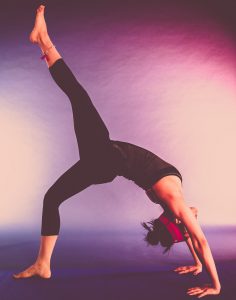The Forms Yoga Takes & How to Start
A solid yoga practice can benefit anyone. Whether you get a yoga teacher at a studio, or just unroll your mat between your bed and the wall, it fits any lifestyle. If you feel unsafe just thinking about this, here is a great resource on perfectly stable moves.
Yoga has been passed down from generation to generation, the practices changing with each new teacher. So, of course, when you search “yoga” online, you’ll come up with tons of sites with every different flavor. The best part is most of them can be tailored to fit you. With all the resources out there, the results can feel like you’ve arrived late to the game.

Here below, we have a list of the basics to get your journey started. Once you decide on which pathway is best for you, remember a few simple lessons in case you’re taking your very first steps.
Yoga Forms
-
- Hatha – This is the general category of yoga. You’ll find the usage of “asanas” and “pranayama” teaching here, meaning postures and breathing techniques respectively. Hatha Yoga would be great for beginners to the practice. The original boost for body and mind.
-
- Vinyasa– This type is more specific as it focuses on moving in a “flow.” With Vinyasa, you synchronize your breathing with your movements, bringing harmony. This practice is good for those that want more exercise via cardio.
-
- Iyengar– This yoga practice was developed in the 1950s, focusing on improving strength and flexibility. It will require you to hold a pose for about a minute. Its uniqueness is the use of props, harkening back to the yogi using a tree for stability. This practice is good for recovering from injury and to build strength.

Asanas in a yoga practice will really change your perspective.
- Iyengar– This yoga practice was developed in the 1950s, focusing on improving strength and flexibility. It will require you to hold a pose for about a minute. Its uniqueness is the use of props, harkening back to the yogi using a tree for stability. This practice is good for recovering from injury and to build strength.
-
- Ashtanga– For a more structured practice, you should look into Ashtanga yoga. Those taught here go in a little deeper than just exercise. It’s a pathway to life. This would be good for those seeking more than just proper alignment.
-
- Bikram– This is a hot yoga class, so be prepared to sweat! Like Ashtanga, this practice will be more formal, so you’ll get a certified instructor. You should choose this class if you’re wanting a detox/exercise pairing.
-
- Kundalini– Think of Kundalini yoga like hatha yoga plus focused meditation. This type of yoga is a step above Ashtanga on the spiritual path. Your mind will be trained along with your body. You should choose this practice if you’re looking at building a more spiritual relationship.
-
- Yin Yoga– This regular yoga practice is taught at a slower pace. You’ll be expected to hold your poses for minutes at a time. If you’re looking to improve circulation and flexibility, this is style fits your needs perfectly.
-
- Restorative– A subset of Iyengar yoga, the restorative practice is focused on supported postures held for a period of time. It’s the perfect replacement for nap-time. Are you stressed and have a hard time relaxing? Take some time to learn these poses.
-
- Anusara– Similar to Ashtanga and Kundalini, this Hatha class sharpens spiritual development. The instructions mirror your alignment in the body with alignment towards a higher purpose. Choose this style if you’re wanting meditative exercise, but paired closer to the body.
-
- Jivamukti– This type isn’t just about the yoga pose either. It melds the practice of loving yourself and everything with the asanas. Unlike the earlier spiritual practices mentioned, this one doesn’t denote specific teaching except for universal love. Choose this one if you’re looking for more peace.
Starting Tips
Now that the different types of yoga are clear you can pick the one that is best for you. There is something for everyone here. But now that you know the type of yoga, where do you start? How do you jump into something that people have been practicing for years? Here are some tips I wish someone told me when I started:
-
- Compare Only to Yourself – Meaning don’t look at someone else’s advanced pose and beat yourself up over it. Beginner yoga may be your step, and that’s a major leap from no yoga at all.
- Breathe– This may seem like a given, but if we get stressed, sometimes we forget to breathe. This is especially true during exercise. You’re going to want to pay attention to your breath as you move. It’s your primary tool.
- Know Where You Start– Defining what you want out of the practice will give you your path. Write down what you want, refer to the list, and set that intention. If you start with a solid anchor, you’ll reach your goals faster.
- Know the Pain– We all have different bodies. There are some asanas I just can’t do, and they hurt me. It doesn’t mean I’m a poor practitioner. I know where my pain is, and that empowers me to seek asanas that support lessening that pain.
- Consistency- Like any practice, you have to be consistent to see results. Whether you’re running, weight-lifting or meditating, yoga is no different. Show up, and half the battle is done.
